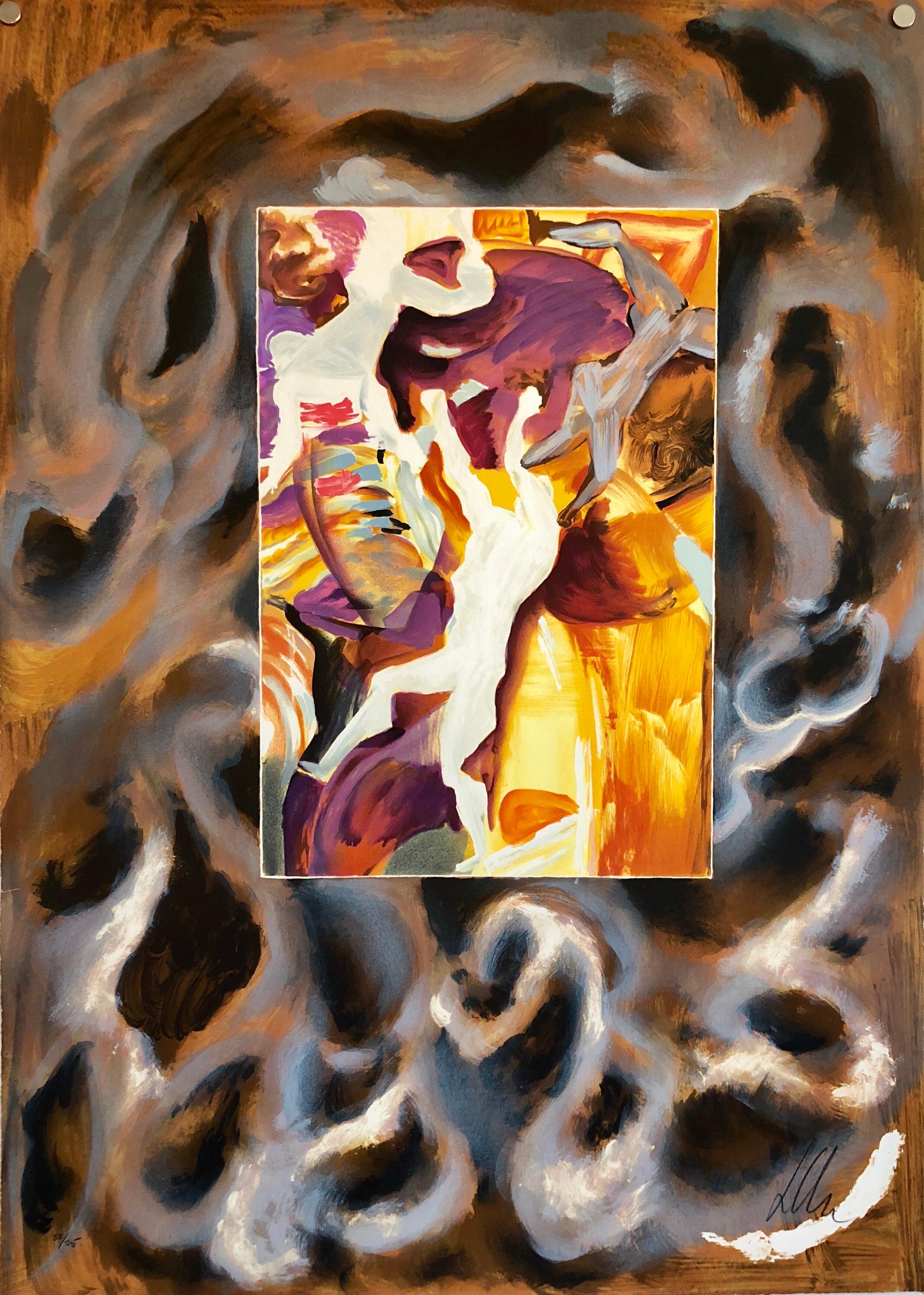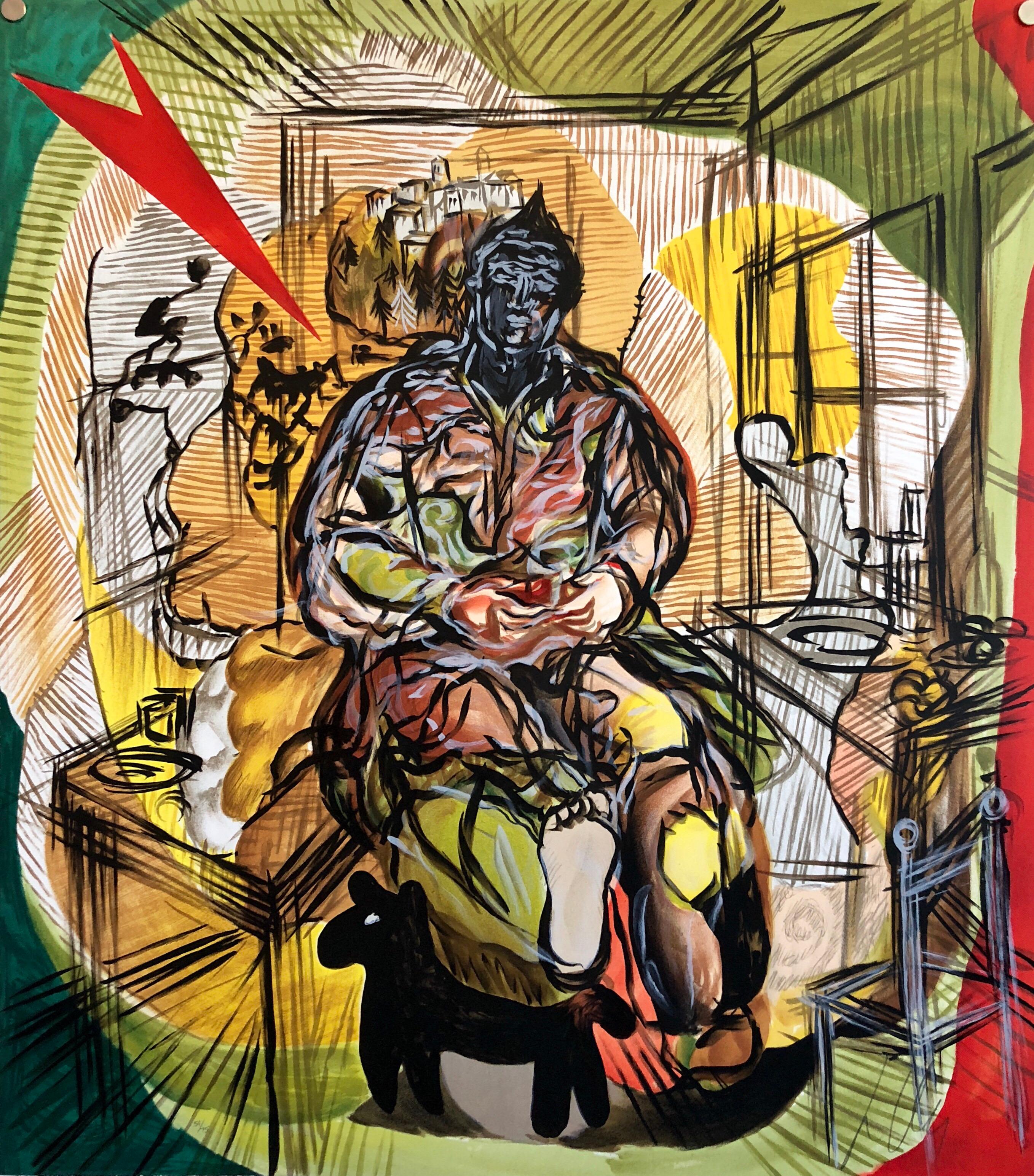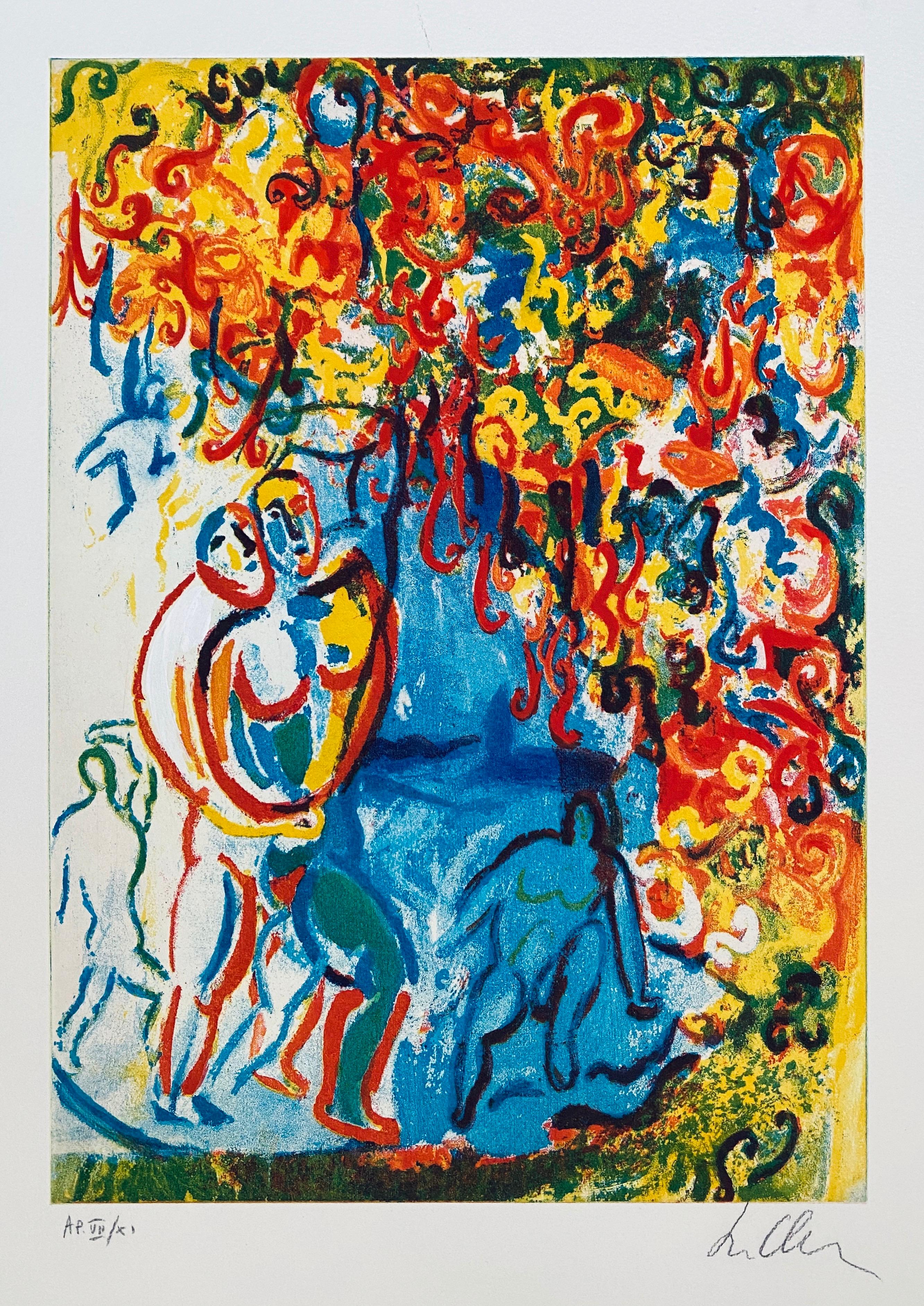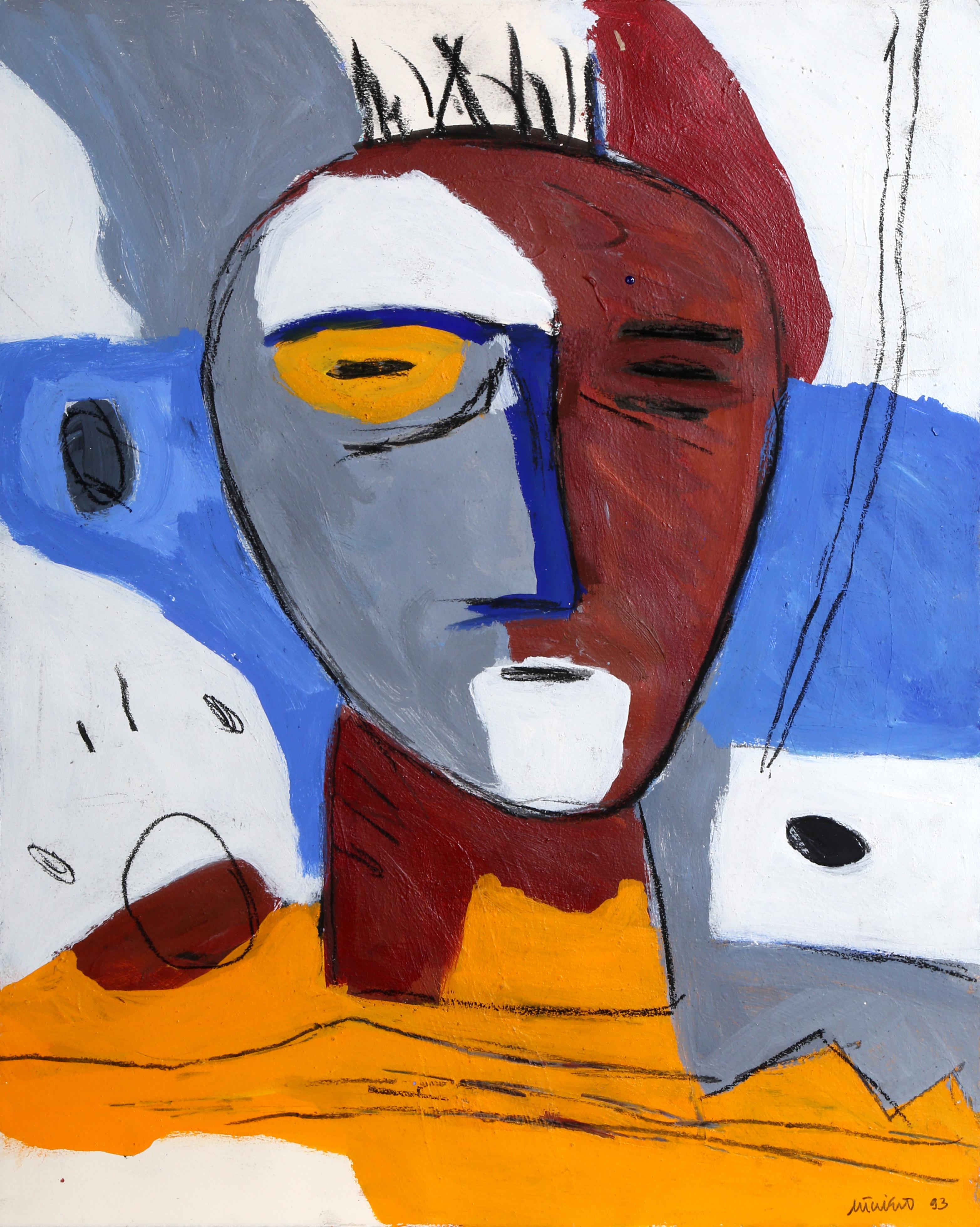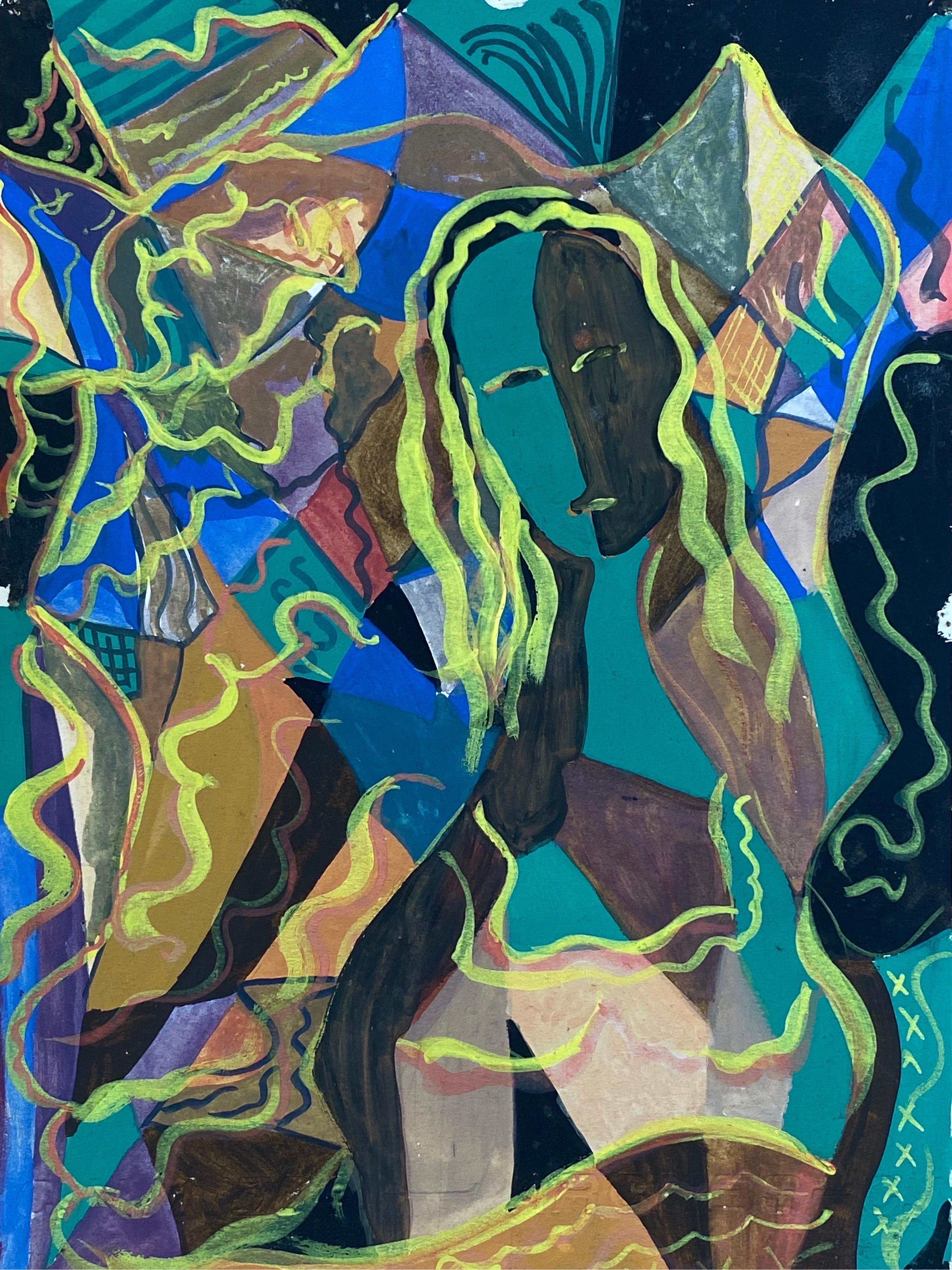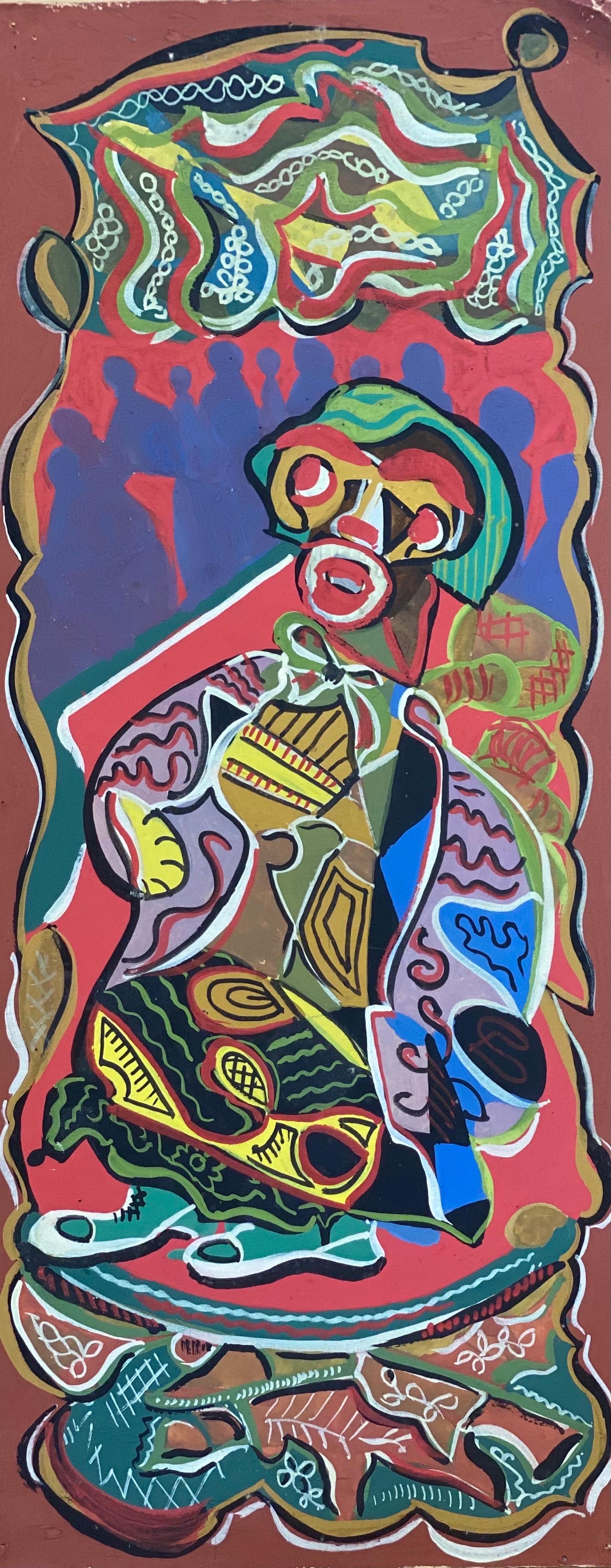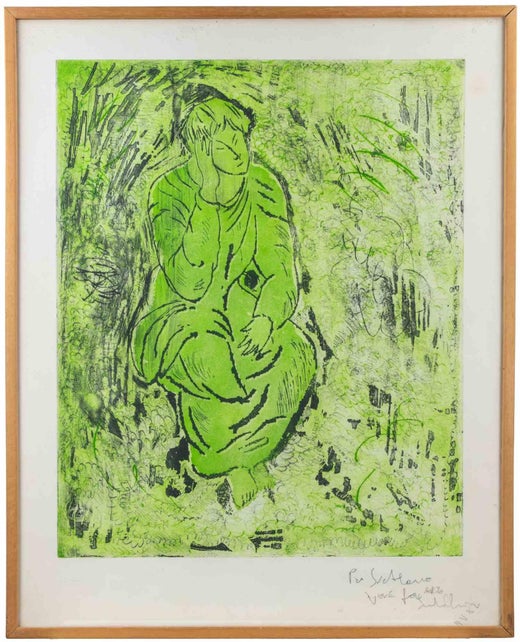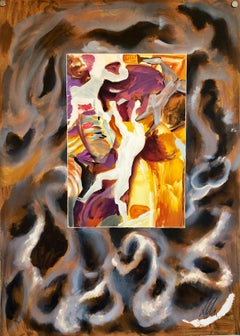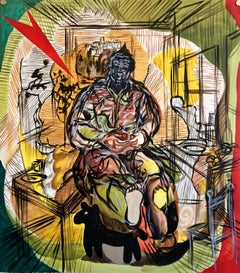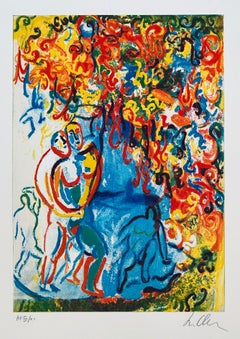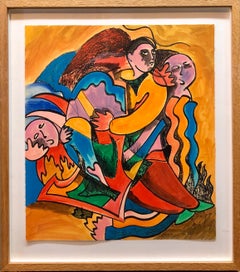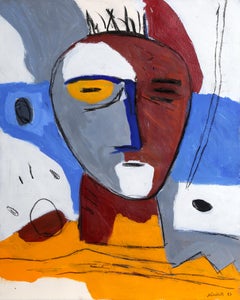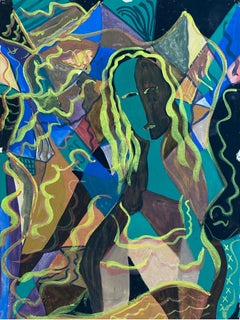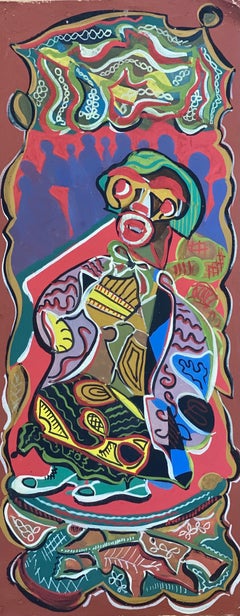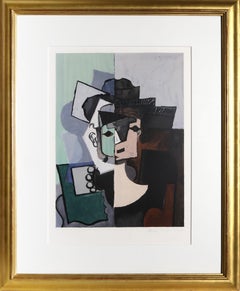Sandro ChiaSentimental Portrait Cubist Lithograph Italian Post Modernist Pop Art1989
1989
About the Item
- Creator:Sandro Chia (1946, Italian)
- Creation Year:1989
- Dimensions:Height: 33 in (83.82 cm)Width: 24 in (60.96 cm)
- Medium:
- Movement & Style:
- Period:
- Condition:Minor wear.
- Gallery Location:Surfside, FL
- Reference Number:1stDibs: LU38212359502
Sandro Chia
Sandro Chia is an Italian painter and sculptor. He was born in Florence, Italy on April 20, 1946. Chia studied at the Istituto d'Arte and then at the Accademia di Belle Arti in Florence, earning his diploma in 1969. After graduating, he traveled extensively to India, Turkey and throughout Europe before settling in Rome in 1970. Amongst his most important personal shows are exhibitions at the Stedelijk Museum of Amsterdam in 1983, the Metropolitan Museum of New York in 1984, the National Gallery of Berlin in 1984 and 1992, the Museum of Modern Art of Paris in 1984, the museums of Düsseldorf in 1984, the Museo Archeologico Nazionale of Florence in 2002 and the Duomo of Sant'Agostino in Pietrasanta in 2005. In 2003, the Italian State acquired three important works of his for the permanent collection of the Italian Senate at Palazzo Madama and in 2005 two monumental sculptures were acquired by the Province of Rome and placed in front of its headquarters in Via IV Novembre, Rome.
- ShippingRetrieving quote...Shipping from: Surfside, FL
- Return Policy
More From This Seller
View All1980s Pop Art Figurative Prints
Lithograph
1980s Pop Art Figurative Prints
Paint, Mixed Media, Woodcut
Late 20th Century Pop Art Figurative Prints
Lithograph
1980s Pop Art Figurative Prints
Paint, Mixed Media, Woodcut
Late 20th Century Pop Art Figurative Prints
Lithograph
1980s Pop Art Figurative Prints
Paint, Mixed Media, Woodcut
You May Also Like
1990s Contemporary Mixed Media
Pastel, Acrylic
Mid-20th Century Modern Abstract Paintings
Ink, Watercolor, Gouache
Mid-20th Century Modern Abstract Paintings
Ink, Watercolor, Gouache
1980s Cubist Portrait Prints
Lithograph
21st Century and Contemporary Cubist Figurative Paintings
Canvas, Acrylic
21st Century and Contemporary Cubist Mixed Media
Canvas, Mixed Media, Acrylic
